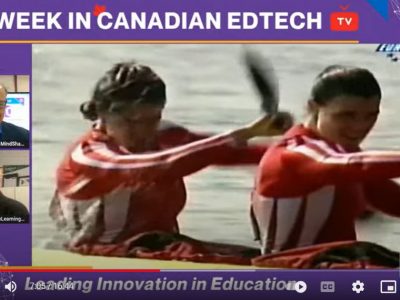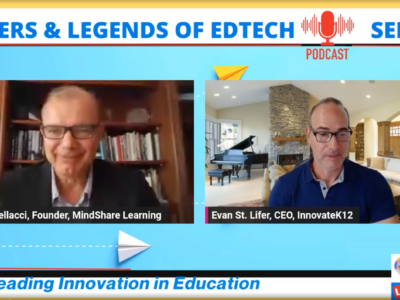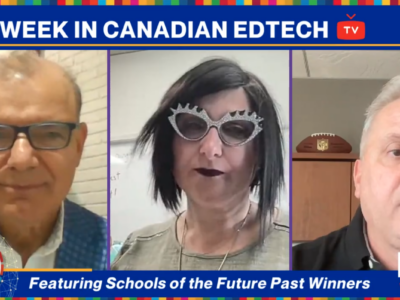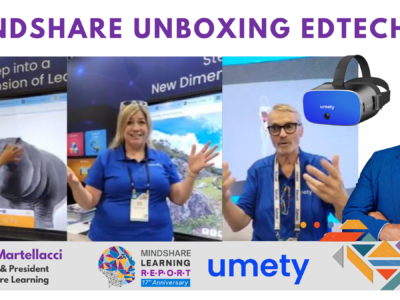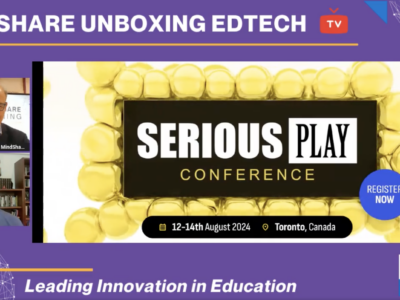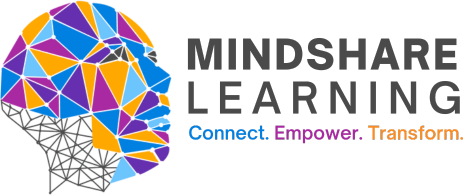Contest Rules
- Video Submission Details— Submit a new video entry via web link uploaded to YouTube or Vimeo, 2 minutes to 4 minutes in length of your interactive classroom success story, innovative teaching practice, engaging students through technology to support student success. Submissions must incorporate the use of technology, i.e. classroom computers, podcasting, interactive whiteboards, sound amplification, video, software, robotics, etc.
- Judges– The MindShare Learning Report Representative (1), MindShare Learning Board member (1), last year’s contest winners (3).
- Judging Criteria— Rubrics based on ISTE NETS standards as last year. We’ll also be looking for teachers to demonstrate an impact on student achievement that will yield bonus points. Rubrics based on the following new ISTE Educational Technology Standards for Teachers:
| a. |
Facilitate and Inspire Student Learning and Creativity |
| |
Teachers use their knowledge of subject matter, teaching and learning, and technology to facilitate experiences that advance student learning, creativity, and innovation in both face-to-face and virtual environments. Teachers: |
| |
| a. |
promote, support, and model creative and innovative thinking and inventiveness. |
| b. |
engage students in exploring real-world issues and solving authentic problems using digital tools and resources. |
| c. |
promote student reflection using collaborative tools to reveal and clarify students’ conceptual understanding and thinking, planning, and creative processes. |
| d. |
model collaborative knowledge construction by engaging in learning with students, colleagues, and others in face-to-face and virtual environments. |
|
| b. |
Design and Develop Digital-Age Learning Experiences and Assessments |
| |
Teachers design, develop, and evaluate authentic learning experiences and assessment incorporating contemporary tools and resources to maximize content learning in context and to develop the knowledge, skills, and attitudes identified in the NETS•S. Teachers: |
| |
| a. |
design or adapt relevant learning experiences that incorporate digital tools and resources to promote student learning and creativity. |
| b. |
develop technology-enriched learning environments that enable all students to pursue their individual curiosities and become active participants in setting their own educational goals, managing their own learning, and assessing their own progress. |
| c. |
customize and personalize learning activities to address students’ diverse learning styles, working strategies, and abilities using digital tools and resources. |
| d. |
provide students with multiple and varied formative and summative assessments aligned with content and technology standards and use resulting data to inform learning and teaching. |
|
| c. |
Model Digital-Age Work and Learning |
| |
Teachers exhibit knowledge, skills, and work processes representative of an innovative professional in a global and digital society. Teachers: |
| |
| a. |
demonstrate fluency in technology systems and the transfer of current knowledge to new technologies and situations. |
| b. |
collaborate with students, peers, parents, and community members using digital tools and resources to support student success and innovation. |
| c. |
communicate relevant information and ideas effectively to students, parents, and peers using a variety of digital-age media and formats. |
| d. |
model and facilitate effective use of current and emerging digital tools to locate, analyze, evaluate, and use information resources to support research and learning. |
|
| d. |
Promote and Model Digital Citizenship and Responsibility |
| |
Teachers understand local and global societal issues and responsibilities in an evolving digital culture and exhibit legal and ethical behavior in their professional practices. Teachers: |
| |
| a. |
advocate, model, and teach safe, legal, and ethical use of digital information and technology, including respect for copyright, intellectual property, and the appropriate documentation of sources. |
| b. |
address the diverse needs of all learners by using learner-centered strategies providing equitable access to appropriate digital tools and resources. |
| c. |
promote and model digital etiquette and responsible social interactions related to the use of technology and information. |
| d. |
develop and model cultural understanding and global awareness by engaging with colleagues and students of other cultures using digital-age communication and collaboration tools.
Source: ISTE’s Educational Technology Standards for Teachers 2008 |
|
How will prizes be awarded?
Winners will be contacted by telephone and email prior to the end of the January in advance of the next MindShare Learning Report. Winners will be announced in the January/February Issue of the MindShare Learning Report eMagazine on the first Wednesday of the month following the submission deadline.
Sponsors will ship prize packages directly to the winning schools. Prizes are intended for utilization at the respective winning schools and not considered the teacher’s personal winnings, with the exception of the ISTE Conference 2010 prize package with the exception of the ISTE prize package.
Additional Rules and Regulations
- Open to full-time K-12 educators working in a publicly funded Canadian School and holding a valid teaching certificate.
- Teachers must seek approval from their school principal to participate.
- Group submissions (teachers and students) by a school are permitted and encouraged.
- Submissions must be in video format and uploaded to YouTube or Vimeo.
- The Submission can be no more than four (4) minutes in length and contain no copyrighted material.
- Please seek appropriate approvals from video participants in the event your submission is successful and we wish to showcase your video.
- Prizes must be accepted as awarded. There is no cash value.
- Winners must be prepared to participate in award ceremonies and agree to their photo being published.
|
|
